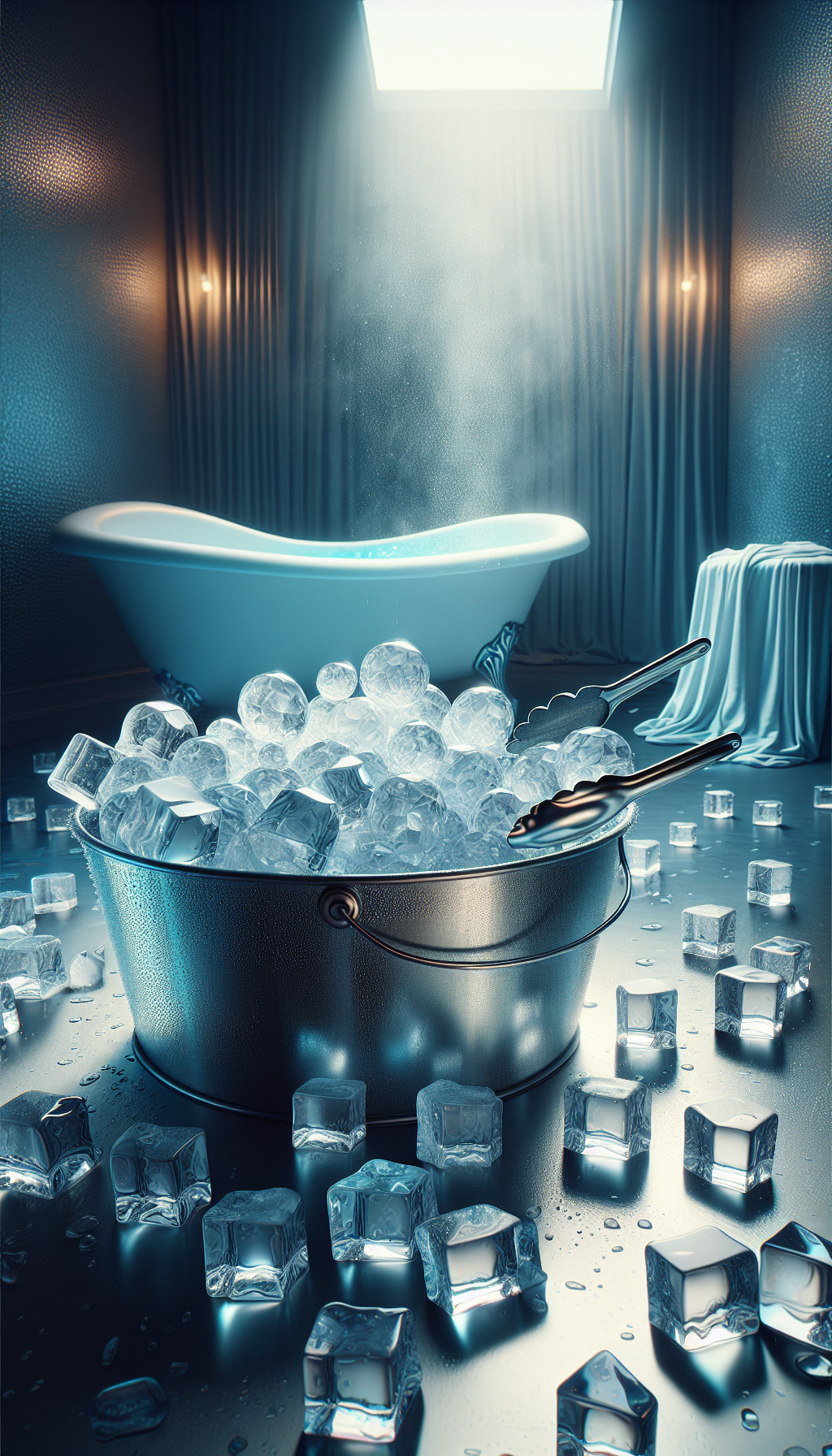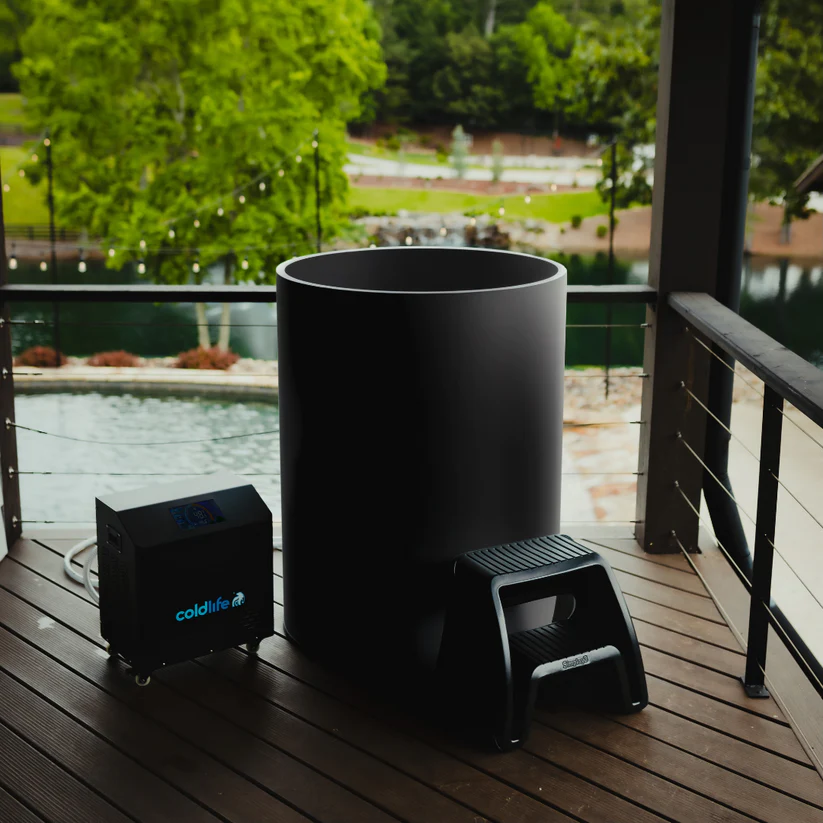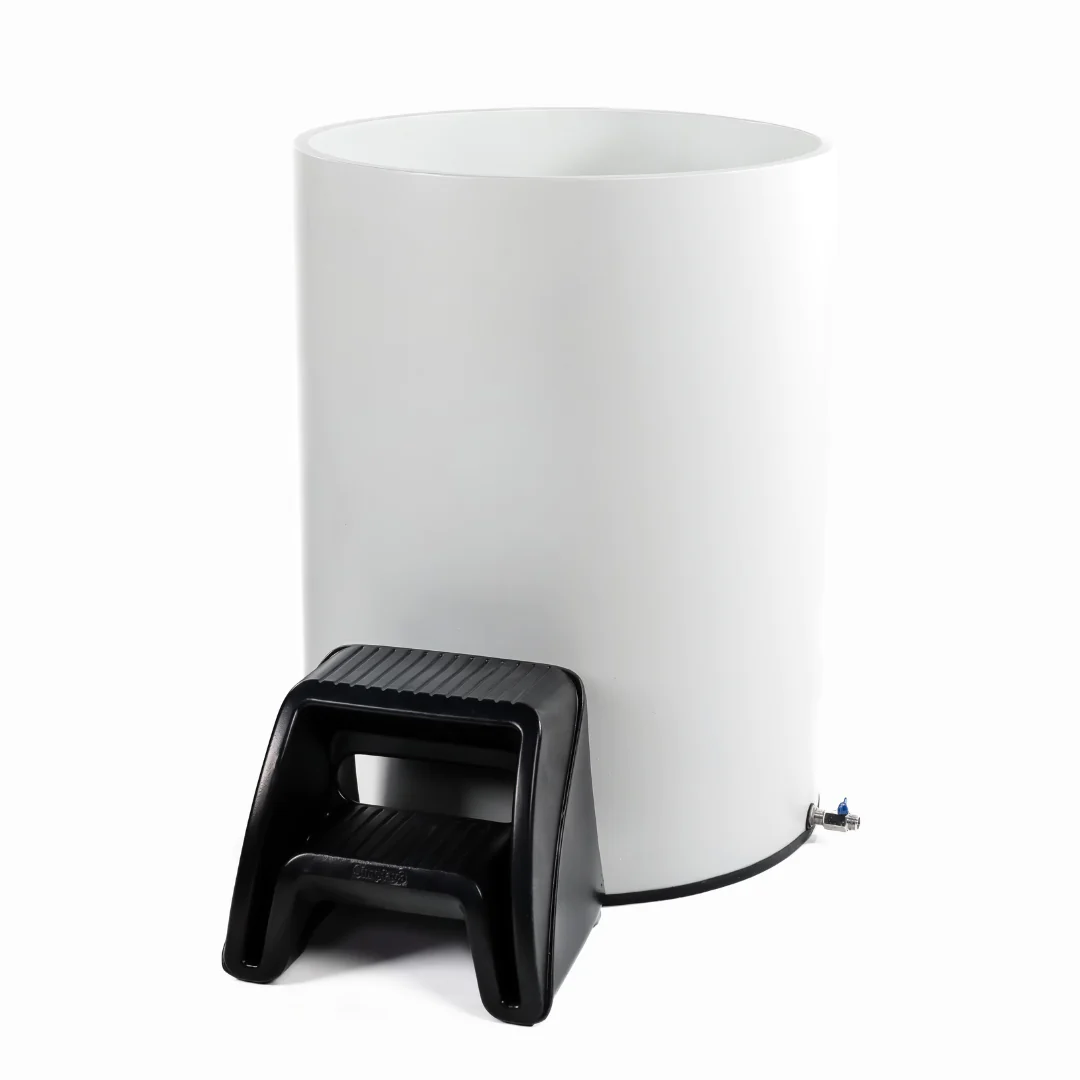Key Takeaways – Best way to make ice for cold plunge
Takeaway 1: Keep it simple and cool
When it comes to making ice for your cold plunge, there’s no need to overcomplicate things. Just grab some molds or large freezer-safe containers, fill them up with water (don’t forget to leave some space at the top), and pop them in your home freezer until they’re solid. Sure, you could use those tiny ice cube trays, but let’s face it – bigger blocks of ice can really take the chill factor up a notch. And if you want to keep your tub or shower cool for longer, throw in some frozen ice packs when you’re ready to take the plunge. Oh, and don’t forget – keeping your tub shaded or even burying it underground can help retain that icy freshness.Takeaway 2: Find the perfect balance
Now, I’m not talking about finding life balance here (although that’s important too), I’m talking about the ice-to-water ratio for a kick-ass cold plunge experience. Aim for a 1:3 ratio of ice to water by volume, and you’ll be soaking in pure bliss. Most folks like their DIY at-home ice baths between 50°F-60°F (that’s roughly 10°C-20°C for my international friends). It’s a good starting point if you’re new to this whole cold plunge thing and don’t want to freeze your buns off right away.Takeaway 3: Get creative with your cold plunge setup
Sure, freezing water in containers is great and all, but why not take it up a notch? Some brave souls out there are opting for their very own DIY chest freezer cold plunge. Grab yourself a caulking gun and make sure those seams are sealed tight before choosing the perfect size freezer for your future chilling sessions. This method gives you more control over keeping the water temperature low for extended periods. And hey, if you’re hardcore about your cold plunges and need a ton of ice on a regular basis, it might be worth considering investing in an ice machine that can make a whopping 100 pounds of ice per day. But hey, before you go diving into that icy abyss, remember to take it slow and acclimate yourself first. Start with shorter dips in cooler water and gradually work your way up to colder temperatures and longer plunge sessions. Safety should always be your top priority, especially if you have any health conditions like heart disease. So don’t push yourself beyond what feels comfortable – there’s no shame in taking things at your own pace. Stay cool, my friends!Our #1 Best Recommended Cold Plunge
Experience the ultimate chilling sensation with our amazing Cold Life Plunge Bundle. This bundle is specially designed for those who appreciate the rejuvenating effects of a cold plunge. Don’t miss out on this great opportunity, visit our site and get your own Plunge Bundle today!Are you ready to redefine your limits with cold immersion?
Explore the compelling truth behind cold plunging and its remarkable benefits for mind and body.
Dive into the Cold Life Plunge Bundle now to embark on your journey to revitalization and strength. Transform your life today!
Here’s a Youtube Video about Best way to make ice for cold plunge
The best way to make ice for a cold plunge at home involves understanding the precise measurements for temperature and volume, creating sizable ice blocks that up your cold plunge experience, and introducing an ice machine into your routine if you’re a regular practitioner.
Exploring a DIY chest freezer method can also be an effective approach. For the best results, maintaining safety measures and comfort levels is paramount during cold plunges.
In this guide, we’ll cover these essential points in detail – ensuring you make the most of your invigorating cold plunge experiences.

Making Ice for a Cold Plunge at Home: A Simple Guide
Making ice for a cold plunge is as simple as filling up molds or large freezer-safe containers with water. You see, the trick is to leave some space at the top before freezing them in your home freezer until solid. This technique, often referred to as efficient ice creation, can also be applied using ice cube trays. However, blocks of ice are usually more effective.Understanding Effective Measurements for Temperature and Volume in Cold Plunges
For high-quality ice formation conducive to the perfect cold plunge temperature, you’ll want a ratio of 1:3 of ice to water by volume. Maintaining your bath between 50°F-60°F (10°C-20°C) will give you an optimal cold plunge experience.
Download this courtesy guide to optimize your sauna and cold plunge experience and health optimization.
Download the Free Guide TodayStepping up your Cold Plunge Experience with Large Ice Blocks
Switching things up could mean trying large blocks of freezing water for your cold plunges instead of smaller cubes. You see, this makes it easier to maintain lower temperatures over longer periods.DIY Chest Freezer Cold Plunge: A Step-by-Step Methodology
You could elevate your cold plunge preparation tips by making a DIY chest freezer cold plunge! This involves sealing any seams with caulking gun and choosing an appropriate size freezer—this method allows for the maintenance of lower water temperatures over prolonged periods, optimizing your cold plunge ice making experience.Investing in an Ice Machine: An Essential for Regular Cold Plungers
It might be worth considering an investment in an ice machine that can produce 100 pounds of ice per day if you are a regular cold plunger. This best method for freezing water provides a continuous supply of ice ensuring optimal ice production for each plunge.Prioritizing Safety and Managing Comfort Levels during Cold Plunges
Begin with shorter durations in cooler water before transitioning towards colder temperatures and longer periods. Of course, safety is paramount – never push yourself into discomfort beyond what you can handle, especially if you have certain health conditions, such as heart disease.
As we embark on the journey of cold plunges, setting up your own cold plunge tub could be very gratifying. On our site, you can check out tips on the best way to make ice for your cold plunge. For those who are looking to invest in new equipment, best cold plunge tub offers insightful reviews and recommendations. Cold plungers not only invigorate the body but can also greatly boost mental health. What does a cold plunge do for health?, explores the various benefits that this practice has to offer. Moreover, understanding the optimal temperature for a cold plunge is crucial for maximizing its benefits and ensuring safety. Therefore, you may find useful information at best temp for a cold plunge. For those interested in combining relaxation techniques, our best way to do a cold plunge guide elaborates on different methods of incorporating this into your routine effectively. On the other hand, if you have space constraints or are working with a tight budget, don’t worry! Our site also provides solutions such as selecting the best from affordable range at best affordable cold plunge. We understand that maintaining your tub is another challenging aspect of owning one; hence, we have detailed guides such as best way to clean a cold plunge to help you keep your tub in top condition. Lastly, are you wondering how long can you leave water in cold plunge? We have it all covered at Sweat and Chill Zone.
My Personal Take about Best way to make ice for cold plunge
Hey there, friend! As George, your go-to guru for all things saunas and cold plunges, I’ve spent countless hours perfecting the best way to make ice for cold plunge.
Now that I think about it, you see, there’s something uniquely rejuvenating about alternating between the steamy embrace of a sauna, and the invigorating chill of an ice-cold plunge.
- You prepare your sauna session with meticulous care,
- Tending to every detail
- and then you dive into a pool of perfectly prepped ice-cold water.
In any case, don’t just take my word for it. Once you experience this magic combo, I bet you’ll be as hooked as I am – there’s nothing quite like it. So here’s to taking the cold plunge… literally!
Our #1 Best Recommended Cold Plunge for most People
Whether you need to replace a worn-out cooler or are simply looking for the best-in-class cooling solution, ColdLife Plunge 1 is an ideal choice. Being conveniently replaceable with top-notch efficiency makes this product stand out. Visit our website today and choose ColdLife Plunge 1 as your reliable and replaceable cooling companion.Discover the unparalleled benefits of cold immersion with ColdLife Plunge 1. Unleash your full potential with our innovative cold plunging solution. Explore the transformative effects on your body and mind. Elevate your lifestyle with ColdLife Plunge 1 today!
Frequently Asked Questions about Best way to make ice for cold plunge
1. Can I use ice cube trays instead of molds for my cold plunge?
Yes, you can use ice cube trays, but larger blocks of ice can enhance the cold plunge experience.
2. Should I add ice packs to keep the water cool?
Yes, freezing and adding ice packs to your water can help maintain a cool temperature in your tub or shower during the cold plunge.
3. What is the recommended ratio of ice to water for effective cold plunges?
Aim for a 1:3 ratio of ice to water by volume for optimal results in your cold plunge.
4. How cold should my DIY at-home ice bath be?
A temperature range between 50°F-60°F (roughly 10°C-20°C) is commonly used in DIY at-home ice baths.
5. Can I create my own chest freezer cold plunge?
Absolutely! Sealing seams with a caulking gun and choosing the right size of freezer allows you more control over maintaining lower water temperatures for longer durations.
6. Is there an option to make a large amount of ice regularly for my baths?
If you require a significant amount of ice on a regular basis, investing in an ice machine capable of producing 100 pounds per day might be worth considering.
Now you know Best way to make ice for cold plunge , but that’s only the beginning of your journey here at Sweat N Chill Zone. If you found this post useful there’s more to learn to get you to the next step of your sauna & cold plunge journey. If you read our next articles you’ll be a step further than most people.
Before you go…
Takeaway 1: Keep it simple and cool
When it comes to making ice for your cold plunge, there’s no need to overcomplicate things. Just grab some molds or large freezer-safe containers, fill them up with water (don’t forget to leave some space at the top), and pop them in your home freezer until they’re solid. Sure, you could use those tiny ice cube trays, but let’s face it – bigger blocks of ice can really take the chill factor up a notch. And if you want to keep your tub or shower cool for longer, throw in some frozen ice packs when you’re ready to take the plunge. Oh, and don’t forget – keeping your tub shaded or even burying it underground can help retain that icy freshness.Takeaway 2: Find the perfect balance
Now, I’m not talking about finding life balance here (although that’s important too), I’m talking about the ice-to-water ratio for a kick-ass cold plunge experience. Aim for a 1:3 ratio of ice to water by volume, and you’ll be soaking in pure bliss. Most folks like their DIY at-home ice baths between 50°F-60°F (that’s roughly 10°C-20°C for my international friends). It’s a good starting point if you’re new to this whole cold plunge thing and don’t want to freeze your buns off right away.Takeaway 3: Get creative with your cold plunge setup
Sure, freezing water in containers is great and all, but why not take it up a notch? Some brave souls out there are opting for their very own DIY chest freezer cold plunge. Grab yourself a caulking gun and make sure those seams are sealed tight before choosing the perfect size freezer for your future chilling sessions. This method gives you more control over keeping the water temperature low for extended periods. And hey, if you’re hardcore about your cold plunges and need a ton of ice on a regular basis, it might be worth considering investing in an ice machine that can make a whopping 100 pounds of ice per day. But hey, before you go diving into that icy abyss, remember to take it slow and acclimate yourself first. Start with shorter dips in cooler water and gradually work your way up to colder temperatures and longer plunge sessions. Safety should always be your top priority, especially if you have any health conditions like heart disease. So don’t push yourself beyond what feels comfortable – there’s no shame in taking things at your own pace. Stay cool, my friends! If you’re interested in cold plunge therapy, find out the best way to cold plunge on our site. Also, discover the most affordable options for this invigorating and healthful practice.George From Sweat N Chill Zone
George, the passionate founder of Sweat N Chill Zone, is an ardent advocate for holistic wellness through the healing powers of saunas and cold plunges. With a background in health sciences and a fervent dedication to sharing the benefits of thermal therapy, George curates an informative space, offering insights, tips, and expert advice to help individuals optimize their health and well-being through the transformative effects of heat and cold treatments. Through Sweat N Chill Zone, George aims to inspire and educate, fostering a community centered around rejuvenation and vitality.
Download this courtesy guide to optimize your sauna and cold plunge experience and health optimization.
Download the Free Guide Today




